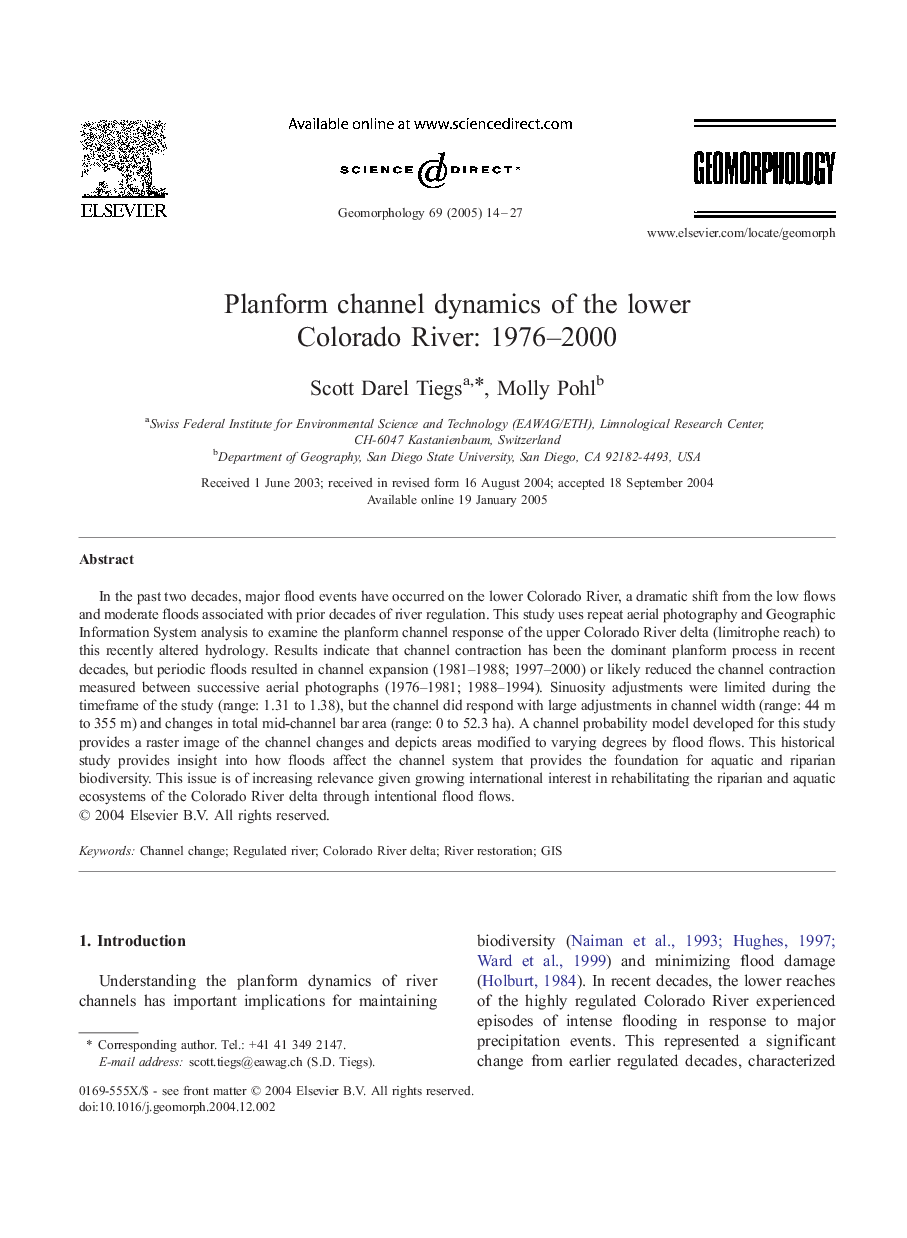| Article ID | Journal | Published Year | Pages | File Type |
|---|---|---|---|---|
| 9524897 | Geomorphology | 2005 | 14 Pages |
Abstract
In the past two decades, major flood events have occurred on the lower Colorado River, a dramatic shift from the low flows and moderate floods associated with prior decades of river regulation. This study uses repeat aerial photography and Geographic Information System analysis to examine the planform channel response of the upper Colorado River delta (limitrophe reach) to this recently altered hydrology. Results indicate that channel contraction has been the dominant planform process in recent decades, but periodic floods resulted in channel expansion (1981-1988; 1997-2000) or likely reduced the channel contraction measured between successive aerial photographs (1976-1981; 1988-1994). Sinuosity adjustments were limited during the timeframe of the study (range: 1.31 to 1.38), but the channel did respond with large adjustments in channel width (range: 44 m to 355 m) and changes in total mid-channel bar area (range: 0 to 52.3 ha). A channel probability model developed for this study provides a raster image of the channel changes and depicts areas modified to varying degrees by flood flows. This historical study provides insight into how floods affect the channel system that provides the foundation for aquatic and riparian biodiversity. This issue is of increasing relevance given growing international interest in rehabilitating the riparian and aquatic ecosystems of the Colorado River delta through intentional flood flows.
Related Topics
Physical Sciences and Engineering
Earth and Planetary Sciences
Earth-Surface Processes
Authors
Scott Darel Tiegs, Molly Pohl,
